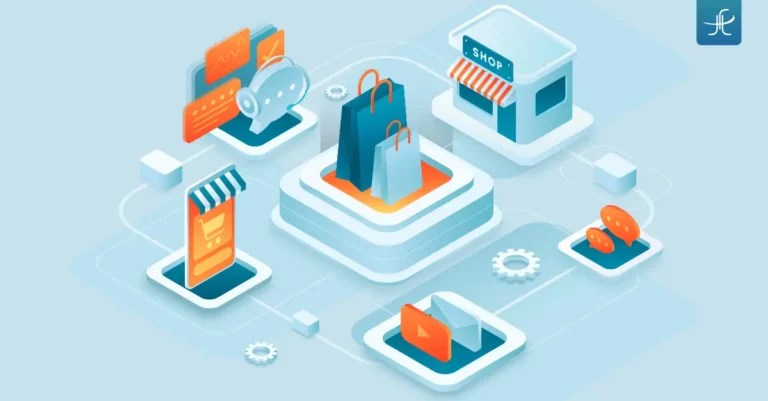The entire process of selecting, buying, billing, and taking-home retail products has coalesced within a few clicks on e-commerce websites. At present, technology blesses us with the comfort of shopping from remote locations, avoiding the hustle-bustle and trailed queues in megamalls and shopping centers.
Amazing, isn’t it?
According to insights by Statista, the predicted market for global artificial intelligence in the retail industry is going to be around 31.18 billion US Dollars by 2028. Intelligent services like personalized shopping, contactless payment, Internet of Things (IoT) have accelerated the quest for a complete digital retail ecosystem.
In this blog, we will discuss how technology in retail has modified it over the decades and what are the prospects of the retail industry in the future.
Significant milestones in the retail industry
The first milestone in the retail industry was accomplished when Jeff Bezos shipped the world’s first-ever online book sale on Amazon in 1995. EBay, too, was launched for retail products in the same year. These pioneers incited the revolution for technology in retail and the world never looked back.
In the 2000s, the intense proliferation of internet services and technology, such as faster internet speed, more connectivity, and mobile app development stirred customers’ inclination toward e-commerce shopping and the digitized retail industry.
By the 2010s, the integration of consumer data analytics, automation, and AI accelerated the e-commerce growth pace significantly. The retail industry used invaluable insights about consumers’ behavior to optimize their operations and personalize buyers’ shopping experiences altogether.
A substantial landmark achievement was accomplished by the onset of mobile payment systems by Google Wallet(2011) and Apple Pay(2014), eventually giving rise to m-commerce (mobile commerce), an overwrought phase for e-commerce expansion.
The most profound effect on the retail industry was realized during the peak of the pandemic, leading to a sudden forward leap in the share of e-commerce in the total worldwide retail sales from 17.8% in 2020 to 20.8%. Additionally, the rise in the percentage is estimated to go up to a staggering 25% by 2026 according to a report by Statista.
Benefits of technology in the retailing industry
There are numerous benefits of technology in the retail industry. From less hassle to more purchases within clicks, technological advancements have recast the industry astoundingly.
Supply chain management
Technology plays a crucial role in supply chain management as it boosts cost-effectiveness, visibility, and efficiency. Inventory management, demand forecasting, supplier management, logistics and transportation, warehouse management, data storing, and connectivity are functions that stay interconnected and autonomously drive supply chain management.
Quick purchase
Services like one-click ordering, trend-based suggestions, organized and smooth product navigation, personalized recommendations, in-app purchases, and mobile payment solutions leverage the resource management capabilities of the retail industry, aiding it to serve buyers with on-time product selection and delivery.
Customer feedback
Physical retail stores lack transparency while online purchasing offers the benefit of authentic and personalized product reviews, empowering customers to make informed decisions based on quality and durability.
Skip queues
It is potentially the most desired advantage responsible for a high surge in e-commerce shopping. It lets a buyer splurge without facing exhaustive queues to billing counters. Online retail stores permit buyers to order products from any remote corner, be it from their homes or while commuting to work.
Anytime purchase
Traditional brick-and-mortar stores run and operate for specific hours, restricting a shopper’s buying behavior whereas retail technology allows a user to click and order at any hour of the day. Eradicating time bars on shopping is another factor that has escalated intense technology use in the retail industry.
High-end intelligent technology advances in the retail industry
The upcoming era is anticipating an intelligent and automated framework with continued technology advancements and user data interpretation.
Mobile commerce
The accessibility and connectivity will be improved with the more intense proliferation of smartphones and tablets in the next decades. Furthermore, with 5G cellular networks, m-commerce is poised to become more powerful and seamless. Mobile-first campaigns will also drive the pursuit.
Targeted marketing
In the realm of shopping, targeted marketing plays a significant role. With diverse strategies emerging for brand promotion, targeted marketing also facilitates a better and wise tracking of vast amounts of user data. It provides personalized suggestions to buyers based on their purchasing history.
Augmented and virtual reality
Augmented and virtual reality creates endless possibilities for improving product-customer interaction resulting in higher sales. Furthermore, benefits like virtual try-on, virtual showrooms, product visualization, interactive in-store displays, and store navigation enhance the capabilities of the retail industry to inflate customer satisfaction.
According to Statista, the market size for global virtual fitting rooms is forecast to be approximately 15 billion U.S. dollars by 2029.
Virtual assistants and chatbots
Virtual assistants and chatbots help in customer support, virtual store touring, handling and addressing queries, optimizing inventory levels, timely store replenishment, avoiding stock-outs, order tracking, and FAQs. These technical facilitators simplify the entire purchasing process for customers and strengthen brand loyalty.
Data analytics and business intelligence
Employing data analytics and business intelligence (BA) support retail enterprises with valuable insights, demand forecasting, price optimization, store performance analysis, marketing effectiveness, fraud detection, inventory management, and revenue loss prevention. The information pilots businesses to augment their services and marketing efficiency.
Conclusion
The retail industry has transformed significantly over the decades. Currently, shopping is more focused and personalized due to meticulous analysis of market dynamics and consumer purchasing behavior. With the advent of mobile shopping and fast payment methods, the newer face of the retail industry will go a long way.
Jellyfish Technologies can help your retail business with consultation, deployment, technical support, e-commerce integration, infrastructure setup, inventory management, cloud services, mobile solutions, data security, and protection. We assist retail businesses with comprehensive and elaborate services that elevate their workflow and brand performance.


